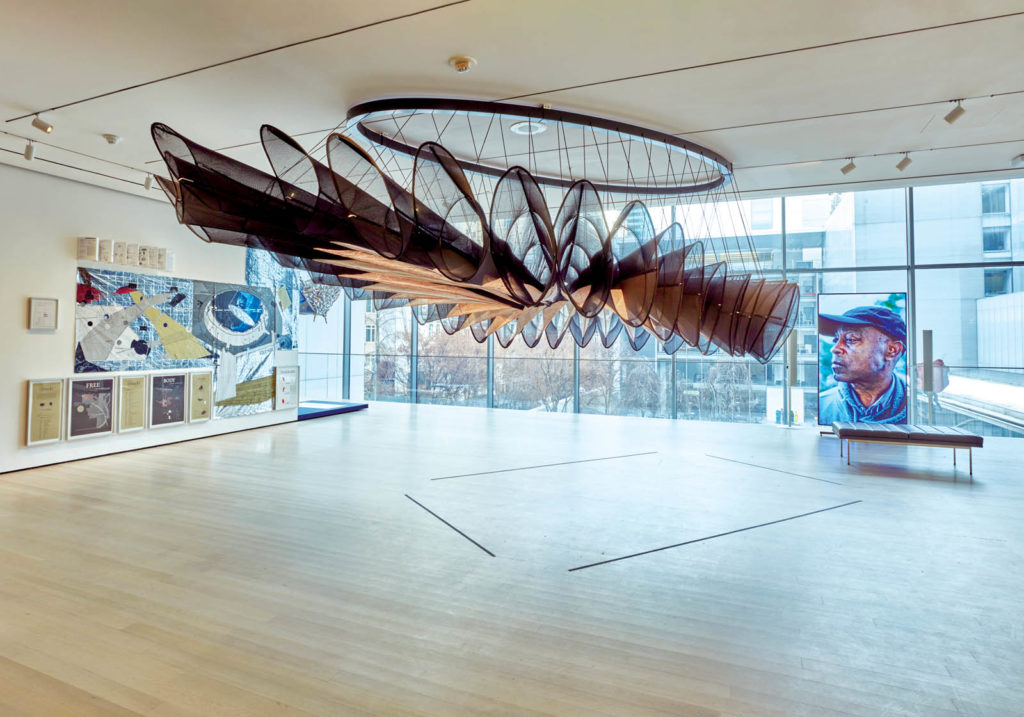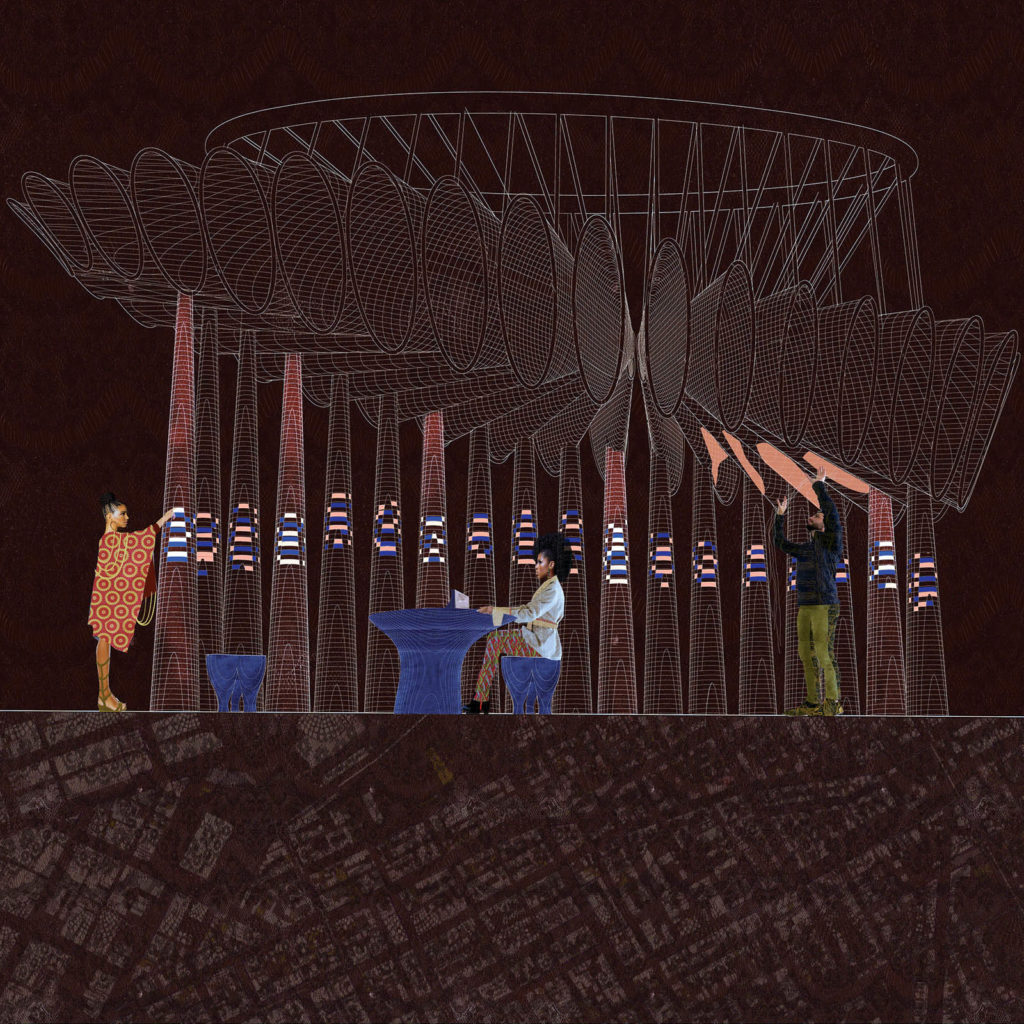
Architect Felecia Davis used active textiles and advanced knitting technologies to create “Fabricating Networks,” on display at New York’s Museum of Modern Art (MoMA) this past spring as one of 11 projects featured in “Reconstructions: Architecture and Blackness in America.” The exhibition examined contemporary architecture in the context of systemic racism and the histories of discrimination and injustice in the U.S.
Davis’s piece recalls Pittsburgh’s Hill District, a vibrant, predominantly Black neighborhood in the early 20th century that was destroyed for “redevelopment,” displacing some 8,000 people.
“Fabricating Networks” featured a large suspended black textile flower made up of 34 knitted cones, some of which included an embedded copper yarn, which made the textile active. As visitors walked around the piece, they heard sounds of different electromagnetic waves captured in MoMA’s galleries—essentially, hearing that which is invisible.

Leah Resneck, knitting lab manager at NC State University, assisted Davis in the fabrication of the piece. Resneck told Shima Seiki U.S.A. that each cone was knit on a N. SVR123SPSV 14G knitting machine, using half-gauge to achieve a tubular state, programming them to include three to four layers to form “integrated channels along the length and circumference of each tube. These tubular channels house the fiberglass and aluminum elements of the sculpture’s frame.”
Davis is an associate professor at the Stuckeman Center for Design Computing in the School of Architecture and Landscape Architecture at Pennsylvania State University and is the director of SOFTLAB@psu.
“I’ve been inspired to work with textiles because this was a skill that I really enjoyed as a child, learning how to sew, working with my mother, working with my aunt,” Davis said in the MoMA audio playlist for the exhibition. “Bringing that into architecture, I can make buildings with textiles that I can lift with my own body, that I can make with my own body. So the textile was a source of liberation.”
 TEXTILES.ORG
TEXTILES.ORG


